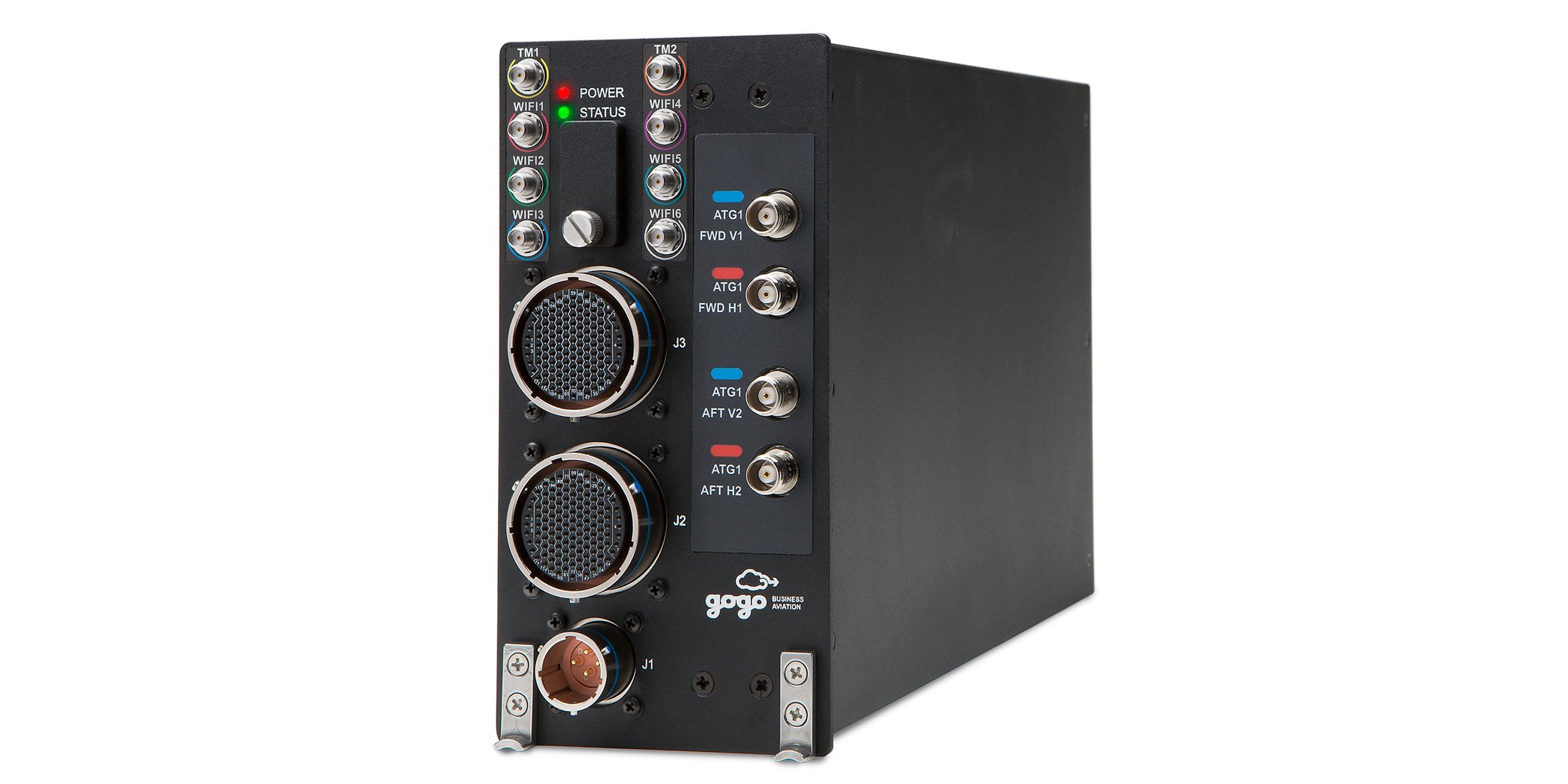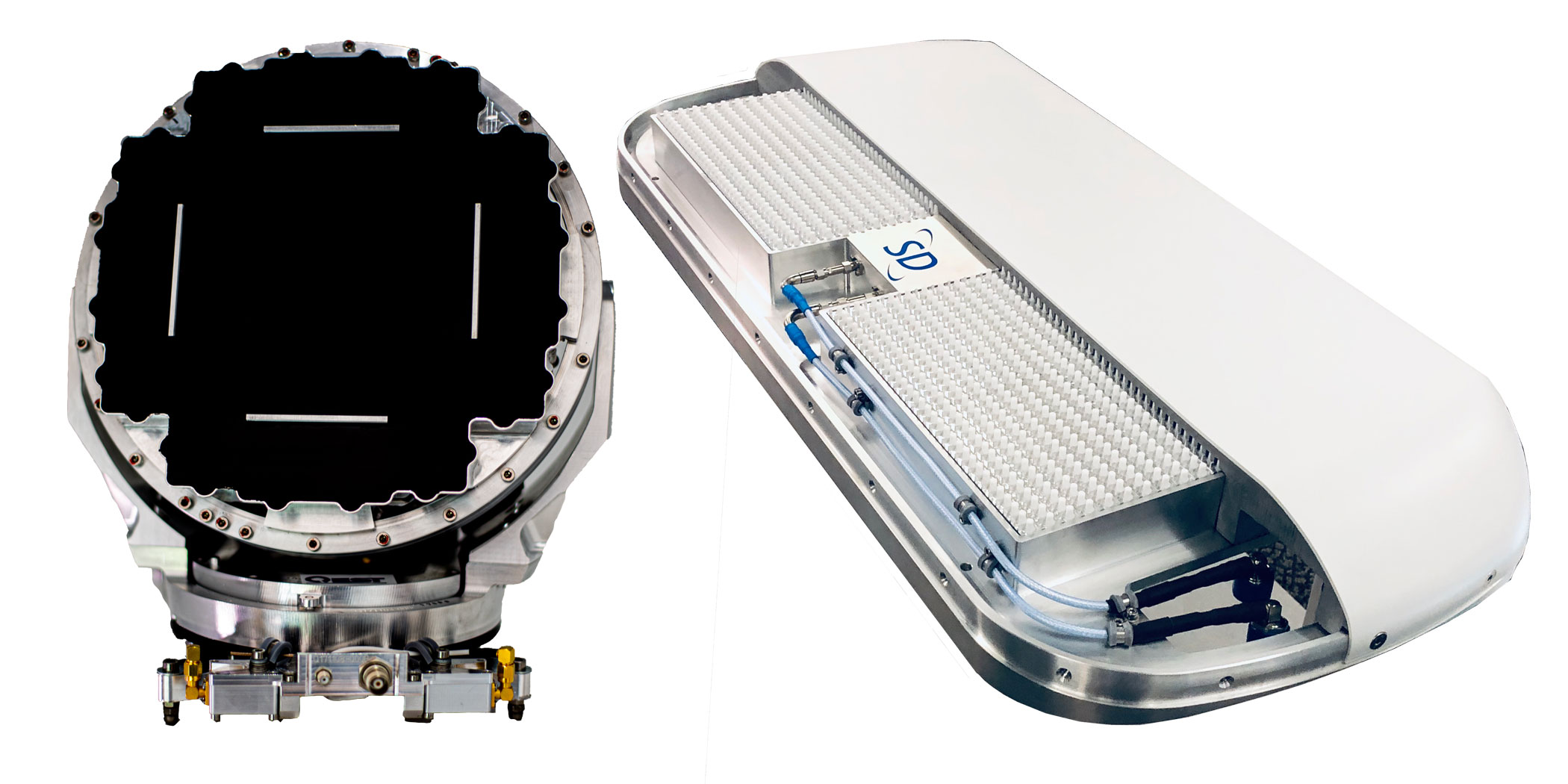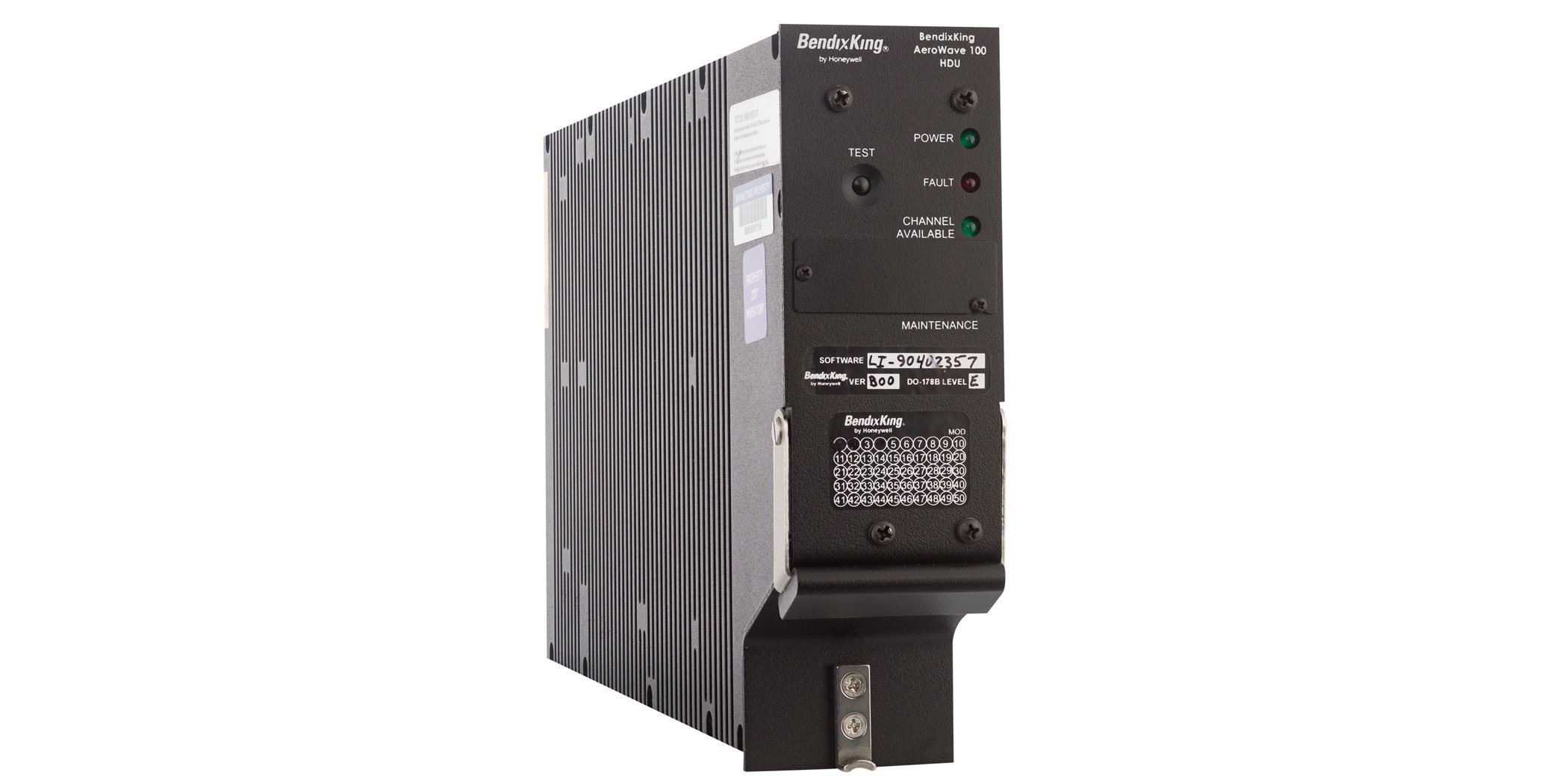Click Here to View This Page on Production Frontend
Click Here to Export Node Content
Click Here to View Printer-Friendly Version (Raw Backend)
Note: front-end display has links to styled print versions.
Content Node ID: 403434
New satellite and air-to-ground (ATG) networks and coming improvements to first-generation connectivity systems are bringing lower cost, higher speed, and more compact Wi-Fi access to a growing number of aircraft, now extending from executive airliners to smaller general aviation aircraft. Here are some of the major developments to look for in 2021.
Air-to-Ground Networks
Gogo Business Aviation Avance L3

Gogo Business Aviation rang in the New Year on the heels of notching the 500th installation of its Avance L3 ATG broadband Wi-Fi system, a lower-cost and smaller footprint option to its Avance L5, delivering about one-third the speed of its flagship service, and sized for turboprops to midsize jet aircraft. Connected to the Gogo Biz 3G data network, Avance L3 provides access to email, texting, internet browsing, and voice calls.
Three service levels are offered: Core (email, voice, and light internet browsing on up to five devices); Plus (full internet connectivity in addition to email on up to seven devices); and Max (Plus-level service on up to 25 devices). Service plans can be changed literally “on the fly” en route, without any onboard reconfiguration, to accommodate passengers’ and operators’ variable needs, a spokesman for the Colorado-based company said.
Avance L3 hardware costs about $40,000. Hourly, monthly, and annual data service plans include unlimited access for $99 per hour; pay-as-you-go monthly plans from $6.95 per MB to 250 MB ($1,195); and annual plans from 500 MB/year ($2,495) to 5,000 MB/year ($12,995). Complementary Text & Talk plans are also available, facilitating the use of passengers' own mobile devices.
The recent Avance 4.2 software update enables Gogo Vision 360 ($849 per month), a premium version of the Gogo Vision IFE service featuring unlimited streaming of on-demand movies, TV programming, and news, and an upgraded 3D moving map.
In December Gogo sold its commercial airline connectivity division to Intelsat for $400 million and announced it would henceforth focus on business aviation. Some of the proceeds will fund the development of onboard connectivity systems “that can provide even more bandwidth and speed, at costs that meet the needs of any owner/operator,” the spokesman said.
SmartSky Networks
SmartSky Networks is planning to launch its long-delayed, eagerly awaited high-speed ATG network “this summer,” a corporate spokesman said, offering two connectivity options: Flagship, a two-antenna system for larger business jets; and LiTE, a one-antenna installation. Both offer the same “office-grade” internet, operate on the same network, and share the same basic components.
Compared to current ATG and satcom broadband speed, consumers need to use a new metric, the spokesman said: “One second of a peak speed doesn’t translate to a good onboard experience. If you need to measure a speed, we’d suggest using gigabytes per hour and not a legacy megabytes per second figure.”
In addition to providing inflight video conferencing, access to VPNs, and large file transfers in the cabin, SmartSky’s high-speed downlink—a major differentiator from other ATG networks, according to the company—has the capacity to stream aircraft operational and cockpit data.
Flagship will be available first ($90,000), with LiTE ($40,000) to follow. Three business aviation service levels are available: BA5 (5 GB, $2,995 per month); BA20 (20 GB, $4,995 per month); and BA50 (50 GB, $6,995 per month). No speed or performance restrictions separate the plans, and overage fees for all three are $1,495 per 5 GB.
At the debut, the service will cover continental U.S. territory hosting 90 percent of all business aviation flight hours, with remaining coverage gaps to be filled by year-end.
The North Carolina company’s onboard hardware manufacturer partners are Satcom Direct, Honeywell, and Avionica, but the SmartSky network is router agnostic and can work with any properly configured third-party hardware. Installation costs “will be very competitive with comparable connectivity services,” the spokesman said, and several STCs are available, with “many more” planned and in the works.
Certus Comes to Town
Iridium has launched the high-speed Certus service running on its Next satellite network, an L-band low Earth orbit (LEO) constellation of 66 satellites. The network provides pole-to-pole global connectivity at speeds up to (at introduction) 704 kilobits per second (kbps), at a fraction of the cost of legacy geostationary networks, according to the Virginia-based satcom company. Hardware and service plans from partner equipment manufacturers and access providers debut this year.
The Next constellation’s Certus 9810 transceiver, the system’s core digital and radio frequency module, offers 10 times the speed of classic Iridium service, able to interface with terminals that support streaming hi-def video and other bandwidth-intensive applications. The lower weight and smaller antenna footprint needed for LEO systems reduce the drag and power requirements of legacy geostationary network installations. Moreover, at some 40 times closer to earth, LEO constellations have lower latency and are more resistant to terrestrial weather conditions than geostationary satellites.
Collins’s Certus Solution
Collins Aerospace expects mid-2022 certification for its Certus IRT NX system, with the approval process to be overseen by Boeing, which will install the L-band system on its 737 Max and 777X transports. STC development will follow certification and will be available for a wide range of business as well as commercial aircraft.
The service will initially offer 704 kbps peak speed, but should eventually reach 1 Mbps, according to the company. Collins is developing its own Active Low Gain Antenna for the system, which will reduce the risk “for operators to adopt this new technology,” said Mark Fisher, senior manager for product management.
An antenna for a 176 kbps system for smaller aircraft (e.g. light jets and helicopters) or those that don’t need full broadband capability is also under development and will debut next year.
Hardware and service specs, costs, and product name have yet to be decided.
Honeywell Aspire

Honeywell offers a variety of Aspire Iridium satcom solutions targeting light to midsize business aircraft, including the Aspire 100, 150, 200, 300, and 350. Aspire 100 comprises a 2 MCU form factor that can fit in many aircraft types, and one or two voice and circuit data channels are available. Aspire 150 and 350 are Iridium Certus systems that will be able to take advantage of the higher speeds offered by Iridium's Next satellite constellation.
Honeywell has added Forge software to its airborne router’s toolkit, for customers subscribing to Honeywell services such as flight planning and datalink. Flight deck enhancements Forge provides include flight optimization and management; and operational and predictive maintenance analytics, all enabled by high-speed connectivity available on the Certus network.
Satcom Direct Plane Simple Antennas Set To Debut 
Satcom Direct is readying release this year of its first two Plane Simple satellite communication antennas, bringing lower-cost high-speed connectivity options to a wider array of airframes. The SD Plane Simple Ku antenna, slated for June introduction, will provide connectivity via Intelsat’s broadband Ku-band satellite service. Meanwhile, the SD Plane Simple Certus LEO antenna, coming in the fourth quarter, will access Iridium’s new Next low earth orbit (LEO) L-band constellation and its high-speed Certus service. Satcom Direct president Chris Moore called the pair “exciting, milestone products.”
A longtime authorized service reseller of its satcom services, Iridium named Florida-based Satcom Direct an authorized hardware OEM two years ago, and Satcom Direct unveiled the Plane Simple line of modular, agnostic, open-architecture antennas in February 2020. These and forthcoming Plane Simple antennas will be comprised of two line replaceable units, including the SDR Gateway 2.0 router, which integrates the modem, and the antenna. As the portfolio’s name implies, the products are designed to be simple to onboard, reducing associated costs. “We’ve been conscious to minimize the invasiveness of installations,” Moore said.
Supplemental type certificate approvals for a variety of aircraft are in development for both systems and will be available at product release.
The Certus LEO antenna will be among the first connectivity options providing access to Iridium’s Next LEO constellation, offering high-speed connectivity aboard airframes from turboprop singles and larger. The small form factor fuselage-mounted antenna will also be the first Certus high-gain antenna, providing a more focused beam and better connectivity than available from low-gain antennas. Meeting Iridium’s performance requirements for Class H2 systems, the antenna will support the highest current and future Certus data rates.
The new Iridium core digital and radio frequency module, the Certus 9810 transceiver, delivers a top speed of 704 kbps, some 10 times the speed of classic Iridium, supporting hi-def video streaming and other bandwidth-intensive applications. With Satcom Direct’s acceleration tools, it “will seem like more than a megabit per second,” said Moore.
LEO constellations hold some advantages over geostationary satellite connectivity. Orbiting some 45 times closer to earth, the satellites have correspondingly lower latency, or lag time on bidirectional traffic; their proximity allows smaller and lighter antenna footprints that reduce power requirements and drag; and they’re less susceptible to terrestrial weather interference. Coverage is also better over higher-latitude polar areas.
Satcom Direct also sees a market for the Certus service as a cabin system backup or for dedicated cockpit connectivity aboard larger platforms equipped with Ka-band systems, or for aircraft that operate at higher latitudes where geostationary coverage is unreliable or unavailable. Hardware and service plan prices for Certus service have yet to be announced but Satcom Direct, as both an authorized hardware OEM and value-added service reseller, will be able to offer attractive turnkey packages, Moore said.
The Plane Simple Ku antenna, designed for super-midsize and larger business jets, also provides access to the Intelsat FlexExec Ku-band broadband network. Satcom Direct developed the electronically steered, phased-array, 12-inch tail-mounted antenna in partnership with German aeronautical antenna specialist QEST (Quantum Electronic Systems).
Operating in a lower frequency range, Ku doesn’t offer as much bandwidth as Ka-band systems, which remain the “gold standard of onboard connectivity at the moment,” Moore said. But Satcom Direct sees “a gap in the market for customers with a GIV or a Global who may have struggled to justify the higher installation and service costs of Ka-band.”
Combined with its SD Pro platform and connectivity management tools, aircraft with Ka-band connectivity could use a supplementary Ku service to manage data loads, for example offloading the low-latency data communication demands of multiple passengers to the Ku constellation as needed, automatically. For those interested in secure communications and data integrity, Satcom Direct’s Comsat division, which handles its military and government services, is the exclusive satcom services provider to the Air Force Space Command’s Enhanced Mobile Satellite Services program.
The Ku service could also serve as a portal to a range of Internet of Things-based services that Satcom Direct can customize for larger customers, according to Moore.
Though MROs will obviously have a say in installation costs, Satcom Direct is “targeting a sub-$400,000 install,” hardware included, for Plane Simple Ku antenna systems, Moore said. Satcom Direct is the new antenna's exclusive provider and was set to begin flight testing the Ku installation on its Gulfstream jet near the end of February.
Satcom Direct is also partnering with QEST on its forthcoming Plane Simple Ka TMA, for midsize to large-cabin jets (slated for service entry in the fourth quarter of 2022), and the Plane Simple Flat Panel fuselage-mounted phased-array antenna for light and larger jets (for service entry around 2023).
Skytrac Launches Certus
Skytrac is on course to be first to the Certus market with its SDL-350 (broadband) and ISAT-200A-08 (mid-band) satcom terminals, coming in the third and second quarter respectively. The ISAT-200A-08 builds on Skytrac’s previous flagship narrowband terminal, with speeds of 176 Kbps in the launch model. The follow-on SDL-350 offers globally available broadband connectivity at up to 704 kbps, enough to support video conferencing, email, and high-speed internet access. A low-gain antenna and other required components will be included in the SDL-350 shipset. In addition to meeting passengers’ connectivity needs, the SDL-350 can support data-driven proactive maintenance solutions and deliver graphical weather data streaming in the flight deck.

Though far from the blazing megabit per second speeds of Ka-band satcom, L-band technologies “offer a gateway for business aviation operators to access reliable and robust capabilities…at a lower overall cost to competitor satcom systems and services,” a Skytrac spokeswoman told AIN.
With its newest offerings, the Canadian company, already a value-added reseller and service provider, becomes an Iridium manufacturing partner as well, giving Skytrac the margins to offer bundled hardware and service packages “at a fraction of what other networks offer for similar bandwidth and capabilities,” she said.
Hardware and service plan pricing remain to be decided; service costs will be based on data volume, length of contract, and number of aircraft equipped. Installation STCs remain to be developed, but Skytrac said it can support the approvals process. Launch customers for both fixed-wing and rotor markets have signed on.
For current customers, upgrading from a predecessor ISAT-200A unit in the field to the new ISAT-200A-08 terminal will enable applications including image transfer and VoIP.

Skytrac’s legacy Iridium Push-to-Talk service remains available. Push-to-Talk links air and ground teams across wide geographic regions, and basic two-way calling and messaging capability can be added. Multiple hardware, voice, and data packages are available.
Simpler Solutions
Bendix King AeroWave

Bendix-King’s AeroWave 100 provides global voice, text, email, web browsing, and graphical and text weather services for all onboard via the Inmarsat satellite constellation, with installations approved for dozens of models of high-performance piston, turboprop, and light turbine aircraft.
AeroWave offers up to 200 kbps of bandwidth worldwide. Purchase and installation prices start at about $24,500. Data plans include hourly (about $40 per hour); monthly (about $400); and 50-hour blocks (about $2,000).
BizjetMobile CrewX
Last September BizjetMobile launched CrewX, a small, lightweight router with a three-inch patch antenna, offering unlimited global text messaging and email via Iridium’s satellite network. Compatible with both iOS and Android devices, users connect to the portable system via Bluetooth. CrewX is priced at $2,490, and the service plan is $199 per month.
The Boca Raton, Florida-based company’s flagship Chiimp Smart system, introduced in 2016, brought Bluetooth technology to inflight connectivity solutions. Chiimp Next, which debuted in 2019, delivers unlimited in-flight email, SMS texting, and WhatsApp messaging via the Iridium for an installed hardware price of $9,900, and $299 per month service fee.
Garmin GSR 56
For light aircraft equipped with its digital flight decks (from GTN-series touchscreen GPS/Navigators and up), Garmin International offers global voice, text, and data services through its GSR 56 Iridium Datalink and Connext services.
The voice service is channeled into the aircraft’s audio/intercom system, and the headset becomes a handset, no longer limiting air-to-ground conversations to brief chats with en route ATC personnel. While a passenger in the back could have a call initiated on the flight deck and talk on the phone via headset, the product is more aimed at pilots and offers global satellite weather and position reporting. That said, insertion of Garmin’s Flight Stream 510 SD card enables Bluetooth and Wi-Fi connectivity between the GSR 56 and iOS and Android mobile devices—whether for EFB apps or back seaters who want to call or send texts. Meanwhile, Flight Stream 510’s capabilities allow flight crews to load flight plans and other data into the flight deck from mobile devices.
The GSR 56 Datalink is $9,995 when bundled with all-inclusive rate plans, which include packages for aircraft logging 150 hours (about $80 per month); 400 hours (about $175 per month); or 800 hours (about $250 per month) annually. Flight Stream 510 list price is $1,495.
Send Solutions Airtext
Airtext from Georgia-based Send Solutions offers global text, email, and voice service for up to 16 people onboard via the Iridium satellite network. After downloading the free Airtext app, users connect mobile devices to the system via Bluetooth. Four Airtext units are available: two installed (each handling up to 16 devices); and two portable (up to 6 devices). The basic Airtext installation (no voice service) lists for $9,750 (uninstalled); and Airtext+ ($16,975) adds phone service ($1.25 per minute). The portable AirtextLT ($4,950) allows texting alone; and the AirtextLT+ ($6,450) provides texting and email capability.
The portable units—about the size of a cell phone—are powered via an aircraft’s 12-volt power and connect to a non-fixed external antenna, eliminating installation costs and making the rigs easy to move from aircraft to aircraft. The systems provide service in the air and on the ground.
All four units offer the same service plan: $300 per year for Iridium and an Airtext network connection, which includes the first 500 text messages, with additional messages 5 cents each. Text messages are limited to 140 characters but can be strung together for longer communiques.